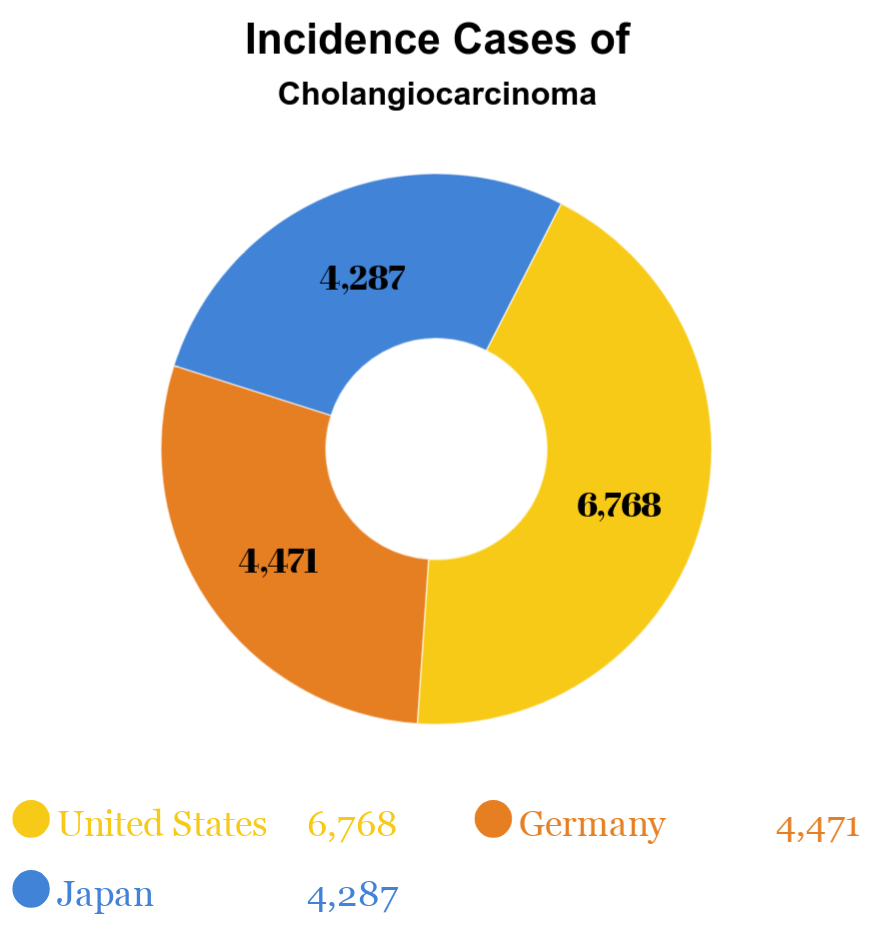What is Cholangiocarcinoma (CCA)?
Feb 22, 2019
Table of Contents
Cholangiocarcinoma (BILE Duct cancer) is a type of uncommon CANCER. It arises in Bile ducts. The Bile duct is a long tubule like structure which connects the liver (hepatic duct) to the gall bladder (cystic duct). It carries bile, which helps in digestion of food, from gall-bladder (produced in the liver) to intestines. CCA arises from the epithelial cells of the intrahepatic and extrahepatic bile ducts. It is a kind of malignant
CCA has three types – Intrahepatic (
Downloads
Article in PDF
Recent Articles
- Machine Learning Models to Help Predicting Cancer Symptoms, Plan Treatment
- DARZALEX FASPRO Quadruplet Regimen Demonstrates Striking Advancements in Treatment Outcomes for N...
- TALVEY’s Versatility Shines: Key Insights from MonumenTAL-2 Study Illuminate Effective Stra...
- Cytotoxic T lymphocyte-associated antigen-4 Market Forecast & Insights
- Notizia
Causes and Symptoms
In most of the cases, the cause behind cholangiocarcinoma is unknown. However, these are genetic mutations in bile cells. There exist various non-genetic risk factors behind cholangiocarcinoma. These include a bile duct disease called primary sclerosing cholangitis, bile duct stones or cysts, and exposure to certain chemical toxins used in manufacturing. A certain lifestyle like smoking and drinking can also induce the disease.
Symptoms include yellowing of the skin and whites of the eyes (jaundice), itchy skin, pale stools, and dark urine, loss of appetite and weight loss, persistent tiredness, abdominal pain and swelling, high fever, chills and shivering etc. And, the lack of early detection leads to an increase in the prevalence level of CCA worldwide.
Incidence of Cases

“The estimates show a higher incidence of Cholangiocarcinoma in the United States with 6,768 cases in 2017.
Among the EU5 countries, Germany had the highest incident population of Cholangiocarcinoma with 4,471 cases, followed by Italy and the United Kingdom. Spain had the lowest incident population. On the other hand, Japan had 4,287 incident cases of Cholangiocarcinoma.
In addition, at advanced stages, the diagnosis shows ICC more frequently than ECC. As per DelveInsight’s estimations, the incidence of cholangiocarcinoma has been increasing worldwide. The total diagnosed incident population of Cholangiocarcinoma (CCA) in the 7MM was 18,470 in the year 2017.
“Cholangiocarcinoma occurs slightly more often in men than in women. It usually affects patients who are between 50-70 years of age.”
Diagnosis and Treatment
Blood tests measure liver function that checks the level of cancer antigen (CA) 19-9 in blood. Doctors use Endoscopic retrograde cholangiopancreatography
(ERCP). In this, a camera examines the area where bile ducts connect to small intestine are some of the ways doctors use to diagnose the disease. Similarly, imaging tests locate abnormality in internal organs.
The treatment of cholangiocarcinoma depends on the size and location of the tumor. The current standard cholangiocarcinoma treatment includes Surgery,Photodynamic therapies, Targeted therapies, Radio sensitizers, and Chemotherapies. The main treatment is surgery. However, if surgery is not effective then radiation therapy and chemotherapy come into use.
The use of locoregional therapies in patients with intrahepatic cholangiocarcinoma comes into the
Emerging therapies & Top Players
There are key players such as Agios Pharmaceuticals, Incyte Corporation, Sirtex Medical, Delcath Systems, Immunitor LLC, Jiangsu HengRui Medicine, and many others are developing therapies for its treatment. Drugs like AG-120 (Agios Pharmaceuticals), Pemigatinib (Incyte Corporation), Melphalan / HDS (Delcath Systems), Cisplatin-gemcitabine (Sirtex Medical), Apatinib (Jiangsu HengRui Medicine), etc. are some of the compelling treatment options in the clinical trials.
The increase in diagnosis, rising incidence, and awareness, rich emerging pipeline, a better understanding of the genetic mutations, along with the testing of targeted drugs and immunotherapies in people with this disease are laying the groundwork for long-awaited advances in the treatment therapies.
Downloads
Article in PDF
Recent Articles
- Neurotech’s ENCELTO Becomes First FDA-Approved Treatment for MacTel Type 2; Plus Therapeutics’ Rh...
- Bristol Meyers Squibb & AbbVie partner; BioLineRx’s collaboration with MD Anderson Cancer Ce...
- Gene Therapy in Oncology: Innovation to Commercialization
- Rare Cancer Market: A Global Crusade on what is a ‘less common cancer’?
- ESMO Asia 2022: Role of EGFR and ALK mutations in the East Asian Lung Cancer Market



